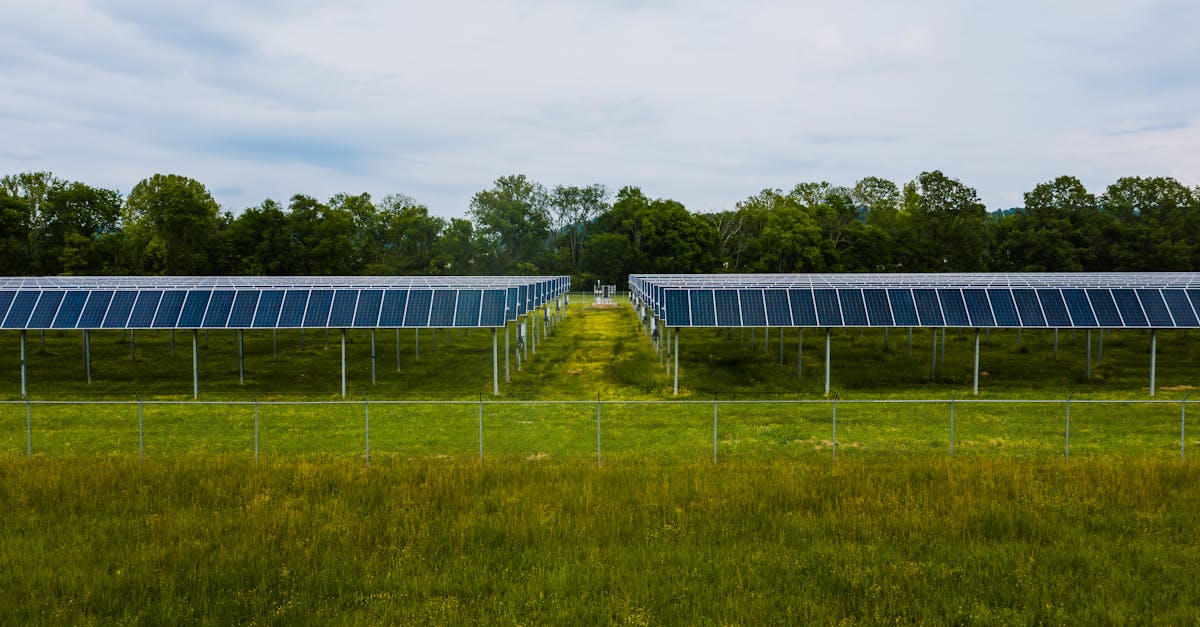Building a Greener Tomorrow: Navigating Sustainable Construction Practices

Welcome to a journey through sustainable construction practices! As the world seeks to mitigate the impact of human activities on the environment, the construction industry stands at the forefront of embracing greener, more eco-conscious methods. This article aims to equip you with practical tips and insights for reducing the carbon footprint in construction projects. From understanding the environmental impact of construction to exploring innovative materials, energy efficiency strategies, waste reduction practices, regulatory compliance, and the power of collaboration, we’ll delve into every facet of sustainable construction. By the end of this exploration, you’ll be empowered to integrate greener practices, materials, and technologies, contributing to a more sustainable and environmentally responsible future in construction projects.
1. Understanding Carbon Footprint in Construction
Thank you for reading this post, don't forget to subscribe!
As we embark on understanding the carbon footprint in construction, it’s essential to recognize the intricate relationship between the construction industry and our environment. The processes involved in construction, from material extraction to building erection, significantly impact the environment, contributing to carbon emissions, resource depletion, and habitat destruction. However, in recognizing the enormity of this impact, there emerges an incredible opportunity for positive change. By reducing the carbon footprint in construction, we can play a pivotal role in creating a more sustainable and ecologically balanced future. Through innovative materials, smart design practices, and energy-efficient technologies, we can mitigate these effects, ensuring that our constructions coexist harmoniously with the environment.
The significance of reducing the carbon footprint cannot be overstated. Embracing greener practices in construction not only reduces environmental harm but also paves the way toward healthier, more resilient communities. By leveraging sustainable materials such as recycled steel, bamboo, and reclaimed wood, construction processes can reduce their carbon footprint while promoting the use of renewable resources and minimizing waste. Additionally, adopting eco-friendly construction techniques and utilizing energy-efficient technologies fosters a greener approach to building, ensuring that structures are not just durable and functional, but also environmentally responsible.
In essence, understanding the carbon footprint in construction is about acknowledging our responsibility to the planet and our role in shaping a better tomorrow. It’s a call to action, inviting us to reimagine how we design, build, and inhabit our built environment. By embracing greener practices and advocating for sustainable construction, we can forge a path toward a more balanced and planet-friendly future.
Environmental Impact of Construction
The environmental impact of construction reverberates across various facets of our ecosystem, encompassing both direct and indirect contributions to carbon emissions and environmental harm. One prominent aspect is the sheer volume of construction materials required, leading to extensive resource extraction and energy consumption. Beyond this, the construction process itself elevates carbon emissions through heavy machinery, transportation of materials, and the energy demands of construction sites. Additionally, the disposal of construction waste poses a significant environmental challenge, often leading to further pollution and habitat degradation. Exploring the specifics of this impact becomes fundamental in order to address these challenges and foster a more sustainable industry.
Construction’s environmental impact extends far beyond its immediate operational footprint. From the carbon emissions produced during the manufacturing of materials to the long-term energy consumption of buildings, the sector significantly contributes to global greenhouse gas emissions. Moreover, the depletion of natural resources, habitat destruction, and pollution stemming from construction activities paint a vivid picture of the industry’s pervasive impact on our environment. It’s crucial to unravel these complexities, striving to find effective solutions that mitigate these impacts to create a more sustainable approach to construction.
Understanding the intricate ways in which construction contributes to environmental harm provides the impetus for change. It underscores the urgency of adopting greener practices, materials, and technologies that can reduce the industry’s carbon footprint, minimize waste, and preserve our natural ecosystems. By delving into these specifics, we equip ourselves with the knowledge necessary to reshape the industry and lead it toward a more environmentally conscientious future.
Importance of Eco-friendly Construction
The importance of eco-friendly construction cannot be overstated in our current environmental landscape. Embracing greener practices and materials in construction is not just a choice but a necessity for forging a sustainable future. By placing emphasis on eco-friendliness, the construction industry can significantly reduce its carbon footprint, diminish resource depletion, and curb environmental degradation. Moreover, eco-friendly construction isn’t solely about mitigating environmental harm; it also presents a remarkable opportunity for innovation, economic growth, and the creation of healthier, more efficient built environments. Through the adoption of eco-friendly practices, the construction industry has the potential to become a pioneering force in sustainability, setting the stage for a brighter, more harmonious future.
Highlighting the relevance of eco-friendly construction underscores the need for holistic and forward-thinking approaches to building design and implementation. As global concern for the environment mounts, there arises a collective responsibility to reshape construction practices in a manner that aligns with ecological balance. Eco-friendly construction not only safeguards our planet but also enhances the quality of our living spaces, promoting healthier indoor environments and reducing energy consumption. It fosters resilient, long-lasting structures that respond to the needs of the present without compromising the well-being of future generations.
In essence, the importance of eco-friendly construction lies in its capacity to restore the balance between human development and environmental preservation. By recognizing and championing the relevance of greener practices and materials in construction, we pave the way for sustainable urban development, vibrant communities, and a more symbiotic relationship between our constructed spaces and the natural world.
2. Innovative Materials and Construction Techniques

The realm of innovative materials and construction techniques heralds a new era of sustainable building practices that prioritize ecological balance without compromising structural integrity. By exploring modern materials and construction methods, the construction industry can effectively reduce its carbon footprint while producing durable, resilient structures. From the implementation of sustainable materials such as recycled steel, bamboo, and reclaimed wood to novel construction techniques that focus on energy efficiency and waste reduction, the integration of these innovations not only minimizes environmental impact but also elevates the overall quality and longevity of built environments.
One of the most exhilarating aspects of the exploration is the seamless fusion of sustainability and structural strength. Innovations in material science have led to the development of eco-friendly alternatives that rival traditional materials in performance and endurance. For instance, advancements in recycled steel production mitigate the environmental strain of steel manufacturing while upholding the same robust characteristics. Similarly, embracing construction techniques that prioritize energy efficiency through smart design practices and sustainable methodologies showcases the industry’s commitment to shaping a greener, more conscientious future.
The beauty of exploring these modern materials and construction techniques lies in their capacity to drive positive change within the construction industry. This exploration reshapes the conventional narrative, debunking the myth that eco-friendly constructions necessitate compromises in structural integrity. Instead, it propels the industry toward unprecedented innovation and environmentally conscious practices that redefine the standard for sustainable building, signifying a paradigm shift that sets the stage for a more thoughtful and sustainable built environment.
Advantages of Sustainable Construction Materials
Using sustainable construction materials offers a plethora of advantages that contribute to both environmental well-being and the quality of built structures. By showcasing the benefits of eco-friendly materials like recycled steel, bamboo, and reclaimed wood, the construction industry can advance towards a more sustainable and responsible approach to building. Recycled steel, for instance, not only reduces the demand for new steel production, thereby lowering energy consumption and carbon emissions, but it also maintains the durability and strength associated with traditional steel. On the other hand, bamboo, a rapidly renewable resource, presents remarkable strength and versatility, providing an eco-friendly alternative to traditional construction materials. Its abundance, quick growth cycle, and natural resilience make it an ideal choice for sustainable construction, contributing to reduced environmental impact and enhanced structural performance. Reclaimed wood, derived from salvaged timber from old structures, imparts a sense of history and character to new buildings while significantly reducing the need for fresh timber harvesting. Furthermore, using reclaimed wood minimizes waste and conserves natural resources, embodying sustainability through preservation and reuse. By showcasing these advantages, the construction industry can highlight the economic viability and environmental benefits of embracing sustainable materials. Beyond their positive impact on the environment, these materials offer diverse aesthetic and functional advantages, fostering unique, visually appealing designs while fortifying structures with robust, eco-friendly foundations. In sum, the advantages of sustainable construction materials extend far beyond environmental benefits. They signal a conscientious shift toward responsible resource utilization, reduced waste generation, and enhanced structural integrity, showcasing the industry’s commitment to crafting a sustainable future. By highlighting these advantages, the construction sector not only elevates the quality and durability of its projects but also contributes to a more harmonious relationship between construction activities and the environment.
Smart Construction Techniques for Energy Efficiency
Smart construction techniques for energy efficiency offer a transformative approach to building design and infrastructure development, emphasizing reduced environmental impact and optimized energy consumption. These innovative methods encompass a wide array of strategies designed to minimize energy usage while maintaining or even enhancing the functionality and comfort of built spaces. The integration of high-performance insulation, advanced glazing systems, and passive solar design, for instance, facilitates improved thermal regulation, resulting in reduced reliance on heating and cooling systems. Additionally, the adoption of energy-efficient lighting, sensor-based controls, and smart building management systems enables precise energy monitoring, contributing to the optimization of energy usage across building systems, thereby reducing waste and overall consumption. Moreover, the deployment of renewable energy technologies, such as solar panels and wind turbines, further bolsters the energy efficiency of buildings and infrastructure, providing a clean, sustainable source of power. Embracing these innovations not only minimizes environmental harm but also delivers long-term economic benefits by lowering operational costs and reducing the carbon footprint of buildings. By detailing these smart construction techniques, the construction industry can propel its practices toward sustainability, offering a harmonious synergy between human infrastructure and the natural environment. In essence, smart construction techniques for energy efficiency are instrumental in reshaping the future of building design and construction, paving the way for environmentally responsible, high-performing structures. The detailed exploration of these methods serves as a catalyst for industry-wide transformation, fostering an ecosystem of sustainable building practices that prioritize resource optimization, environmental stewardship, and enhanced occupant well-being.
3. Maximizing Energy Efficiency and Renewable Energy Integration
Maximizing energy efficiency and integrating renewable energy sources stand as pivotal strategies in modern construction, ensuring sustainable, eco-conscious projects. Embracing renewable energy sources such as solar and wind power not only reduces the environmental impact of construction projects but also secures a clean, renewable energy supply for buildings and infrastructure. By harnessing the power of solar panels, buildings can generate a portion of their energy needs on-site, minimizing reliance on traditional energy grids and fostering energy independence. Similarly, wind power solutions offer a viable means to supplement energy needs while diminishing the carbon footprint associated with electricity consumption. Integrating these renewable sources into construction projects serves as a testament to the industry’s commitment to environmental responsibility and a sustainable energy future.
In addition to renewable energy integration, maximizing energy efficiency within construction projects is fundamental to reducing overall energy consumption and environmental impact. Adhering to energy-efficient building design principles, optimizing insulation, and utilizing advanced, energy-saving technologies all contribute to decreased energy demands and operational costs. Moreover, the integration of smart controls, efficient lighting systems, and building automation further enhances energy efficiency, ensuring that buildings operate at peak energy performance. The synergy between renewable energy integration and energy efficiency maximization not only reduces carbon emissions but also signifies a progressive leap toward environmentally responsible construction practices.
The union of renewable energy integration and energy efficiency in construction projects encapsulates a forward-looking approach that seeks to align human infrastructure with ecological balance. By showcasing this alliance, the construction industry exemplifies its dedication to sustainable development, offering a blueprint for harmonizing human progress with environmental preservation.
Implementing Solar and Wind Power Solutions
Implementing solar and wind power solutions in construction projects unlocks an array of benefits while ushering in a new era of environmental responsibility and energy self-sufficiency. Harnessing solar power presents an opportunity for buildings and infrastructure to tap into renewable energy, decreasing reliance on non-renewable energy sources and reducing overall carbon emissions. Solar panels, capable of converting sunlight into electricity, empower construction projects to generate clean energy on-site, offering a sustainable alternative that mitigates environmental impact. Similarly, wind power solutions introduce a practical means of incorporating renewable energy into construction projects, providing a reliable, cost-effective source of power. These solutions not only reduce long-term operational costs but also position construction projects as beacons of sustainability, epitomizing the industry’s commitment to greener, more responsible energy practices. Exploring the practicalities of harnessing solar and wind power unveils a wealth of opportunities and innovations within the construction sector. Practical and scalable advancements in solar panel technology enable seamless integration into building design, enhancing aesthetic appeal while fulfilling energy needs. Likewise, the feasibility of wind turbines in construction projects offers a dynamic solution for supplementing energy demands, especially in areas with consistent wind patterns. These technologies, when carefully integrated, signpost a future where construction projects no longer solely consume energy but actively contribute to the production of clean, renewable power. By delving into the benefits and practicalities of solar and wind power solutions in construction, the industry’s dedication to sustainability and environmental stewardship is further underscored. These renewable energy sources, besides their ecological advantages, also present compelling economic and societal benefits, shaping a future where construction projects seamlessly coalesce with the environment, fostering a more sustainable and eco-conscious built environment.
Evaluating Energy-Efficient Lighting and HVAC Systems
When evaluating energy-efficient lighting and HVAC systems, we unravel a tapestry of cutting-edge technologies that redefine the very fabric of sustainable construction. Lighting systems have undergone a remarkable transformation, with the advent of LED lighting leading the charge toward energy conservation and superior performance. LED lights not only consume significantly less energy than traditional lighting but also boast extended lifespans and enhanced versatility in terms of color and design. Moreover, the integration of smart lighting controls, such as occupancy sensors and daylight harvesting, further accentuates energy efficiency, ensuring that lighting adjusts dynamically to occupancy and natural lighting levels. These advancements not only diminish energy usage but also pave the way for more comfortable, adaptive environments that respond intelligently to user needs. Similarly, innovations in heating, ventilation, and air conditioning systems have revolutionized energy efficiency within buildings. The advent of high-efficiency HVAC systems, featuring advanced sensors, precise controls, and variable speed motors, represents a leap forward in sustainability and operational cost reduction. These systems optimize energy consumption by dynamically adjusting cooling and heating outputs according to building demands, enhancing comfort while minimizing wasted energy. Furthermore, the integration of renewable energy to power HVAC operations amplifies these environmental benefits, ushering in a future where buildings actively contribute to their energy needs while reducing their carbon footprint. Ultimately, evaluating energy-efficient lighting and HVAC systems propels the construction industry toward a future characterized by sustainable, eco-conscious building practices. These technologies not only symbolize tremendous strides in energy conservation and operational efficiency but also epitomize the industry’s dedication to crafting spaces that are as thoughtful and responsive as they are sustainable.
4. Waste Reduction and Sustainable Construction Practices

When it comes to waste reduction and sustainable construction practices, the industry is paving the way for a more environmentally responsible approach from the ground up. Through a comprehensive examination of methods for minimizing waste and embracing sustainable practices throughout the construction process, the sector is reshaping its fundamental operations. From the initial stages of project planning to the execution and eventual maintenance of structures, sustainable construction practices are becoming increasingly ingrained, ushering in an era of conscientious material use, waste minimization, and resource optimization. One noteworthy aspect is the burgeoning trend of prefabrication and modular construction, which significantly reduces waste by optimizing material usage, enabling precise construction off-site, and minimizing on-site disruptions. This approach not only streamlines construction activities but also significantly cuts down on construction waste, fostering a more sustainable, resource-efficient construction model. Additionally, the integration of innovative, sustainable materials, such as recycled and reclaimed resources, exemplifies the industry’s commitment to responsible sourcing and waste reduction. These approaches not only repurpose materials but also significantly lower the demand for virgin resources, minimizing environmental impact while promoting circular economy principles. Moreover, sustainable construction practices extend beyond material considerations, encompassing a holistic approach that emphasizes energy efficiency, water conservation, and the utilization of renewable resources. From implementing efficient building systems to cultivating green spaces, these practices underscore a concerted effort to harmonize construction activities with ecological balance. By examining these diverse methods, the construction industry embraces sustainability at every stage, signaling its unwavering dedication to creating a more sustainable, conscientious built environment.
Recycling and Waste Management Strategies
The spotlight on recycling and waste management strategies within the construction industry underscores a pivotal shift toward a circular, sustainable economy. Effective approaches to recycling construction materials and reducing waste generation are reshaping the sector from the ground up, fostering a more responsible, resource-optimized construction model. One crucial strategy involves meticulous material sorting and salvaging during demolition or renovation, reclaiming valuable resources such as metals, concrete, and wood for reuse in subsequent projects. This not only minimizes the volume of waste destined for landfills but also promotes the concept of a closed-loop material ecosystem, decreasing the industry’s reliance on virgin resources while curbing environmental impact. In addition, the integration of innovative waste management technologies and practices catalyzes a notable reduction in the magnitude of construction waste. Strategies like on-site processing and repurposing of waste materials, along with the implementation of waste-to-energy systems, are creating a paradigm shift toward resource optimization. Furthermore, the adoption of just-in-time delivery methodologies and lean construction practices minimizes excess materials in construction, mitigating waste generation and enabling precise, efficient project execution. These strategies align construction practices with sustainability, emphasizing the industry’s commitment to waste reduction and responsible resource management. By highlighting these effective approaches, the construction industry underscores its dedication to reshaping traditional paradigms, fostering a culture of responsible waste management and resource stewardship, ultimately moving toward a more sustainable, eco-friendly construction ethos.
Promoting Sustainable Site Management
Promoting sustainable site management practices within the construction industry plays a crucial role in significantly reducing the carbon footprint. It’s not just about what goes into a building, but also the impact of construction operations on the environment. Sustainable site management intertwines operational efficiency with environmental responsibility, focusing on strategies that minimize environmental impact and resource utilization. By emphasizing responsible soil management, erosion control, and mitigation of site disturbances, the industry can effectively conserve natural habitats, limit soil degradation, and preserve biodiversity throughout the construction process. Integrating sustainable site management practices also extends into the realm of water management, emphasizing the importance of efficient water usage, stormwater runoff control, and water conservation. These strategies not only reduce water consumption but also minimize pollution and ecological damage, further contributing to the reduction of the project’s overall environmental footprint. Additionally, advocating for green transportation solutions and minimizing construction-related emissions promotes a comprehensive approach to site management that considers the ecological impact of daily construction operations. This multifaceted strategy not only tackles immediate environmental concerns but also fosters a culture of environmental stewardship, highlighting the industry’s commitment to holistic sustainability. By embracing sustainable site management practices, the construction industry not only redefines its operational standards but also sets an exemplary precedent for an environmentally conscious, forward-thinking approach. These practices underscore an industry-wide commitment to responsible, conscientious construction practices, encapsulating a vision of a more harmonious relationship between construction activities and the natural environment.
5. Regulatory Compliance and Green Building Standards
Regulatory compliance and green building standards serve as guiding beacons, steering the construction industry toward a more sustainable, conscientious future. Navigating the legal landscape and industry standards for greener construction entails upholding environmental responsibility, ensuring compliance, and fostering accountability. Regulations such as the LEED (Leadership in Energy and Environmental Design) and BREEAM (Building Research Establishment Environmental Assessment Method) certifications provide a roadmap for sustainable building practices, encompassing everything from energy efficiency to material selection and indoor environmental quality. Embracing these standards not only ensures environmental stewardship but also nurtures a culture of industry-wide accountability, delivering projects that prioritize ecological balance and human well-being. On a broader level, regulatory compliance aligns construction operations with national and international standards, fostering a more unified, sustainable approach to building design and construction. These regulations not only steer the industry toward sustainable practices but also safeguard the health and safety of occupants and communities, setting benchmarks for innovative, environmentally responsible construction. The integration of sustainable solutions is no longer an option but a necessity, with regulations reinforcing the industry’s commitment to reducing environmental impact, promoting energy efficiency, and ensuring long-term sustainability. By navigating the legal landscape and industry standards for greener construction, the industry sets a clear course toward a more harmonious relationship with the environment. These compliance measures and standards propel the construction sector toward sustainability, emphasizing responsibility, transparency, and a reimagined vision of construction that harmonizes human progress with ecological preservation.
Understanding LEED and BREEAM Certification
Understanding LEED (Leadership in Energy and Environmental Design) and BREEAM (Building Research Establishment Environmental Assessment Method) certification entails recognizing their pivotal role in setting the gold standard for sustainable building practices. LEED certification, developed by the U.S. Green Building Council, establishes a comprehensive framework for evaluating a building’s environmental performance, focusing on energy efficiency, materials selection, water usage, and indoor environmental quality. BREEAM, on the other hand, is a widely recognized certification method that evaluates the sustainability of buildings across the globe, emphasizing factors such as energy efficiency, ecological impact, and occupant well-being. Both certifications provide a roadmap for environmentally responsible, resource-efficient construction, promoting sustainability and ecological balance across the built environment.
The significance of LEED and BREEAM certification lies not only in their capacity to measure and endorse sustainable building practices but also in their ability to drive continuous improvement and innovation within the construction industry. These certifications underscore a commitment to environmental responsibility, human health, and resource conservation, signaling to stakeholders and communities a commitment to sustainable development. Buildings that achieve LEED or BREEAM certification not only showcase environmental leadership but also offer tangible proof of a commitment to energy efficiency, environmental stewardship, and the well-being of occupants.
In essence, understanding LEED and BREEAM certification signifies a dedication to shaping a more sustainable, environmentally responsible future. By recognizing the significance of these certifications, the construction industry propels itself toward a more conscientious, sustainable path, standing as a beacon of environmentally friendly, resource-optimized building practices.
Legal Frameworks for Sustainable Construction
The legal frameworks for sustainable construction play a pivotal role in steering the industry toward environmentally responsible, resource-efficient practices. These regulations and laws set standards that encourage green construction practices and reduce environmental impact. One notable example is the incorporation of building codes and standards that prioritize energy efficiency, resource conservation, and sustainable material usage. These standards not only establish minimum benchmarks for construction but also foster a culture of responsibility and innovation, ensuring that buildings and infrastructure are designed and constructed with ecological balance in mind. Furthermore, environmental protection laws and policies serve as vital instruments for the construction industry, ensuring that projects adhere to stringent regulations that safeguard natural habitats, limit pollution, and sustain the ecological integrity of construction sites.
Additionally, tax incentives and financial programs aimed at promoting sustainable construction practices provide further impetus for the industry to embrace environmentally friendly strategies. These initiatives reward sustainable building design, energy efficiency, and renewable energy integration, offering tangible benefits to projects that prioritize environmental stewardship. Moreover, the regulatory support for green building certifications such as LEED and BREEAM not only encourages the adoption of sustainable practices but also underscores a commitment to creating a built environment that prioritizes health, efficiency, and environmental responsibility. By discussing these legal frameworks, the industry further solidifies its commitment to reshaping construction practices and ensuring a sustainable, environmentally conscientious future.
6. Collaboration and Education for Sustainable Construction
Collaboration and education are driving transformative change in sustainable construction practices across the industry. By fostering an ecosystem of knowledge-sharing and cooperative effort, the industry is propelling itself toward a more environmentally responsible, innovative future. Knowledge-sharing, facilitated through industry alliances, consortiums, and collaborative platforms, fosters the exchange of best practices, cutting-edge innovations, and sustainable methodologies. This collective intelligence not only propels technological and procedural advancements but also enriches construction practices with sustainable, resource-efficient solutions, contributing to a more environmentally friendly construction ethos. The emphasis on collaborative learning extends to educational programs, workshops, and industry initiatives that equip professionals with the latest sustainable construction methodologies and technologies. These initiatives not only bolster professional expertise but also instill a culture of environmental consciousness, providing a pathway for industry professionals to integrate sustainable practices into their daily operations. By empowering professionals with the knowledge and tools for environmentally responsible construction, industry-wide behavioral shifts are encouraged, promoting a unified commitment to sustainability that reverberates across construction projects. Empowering construction professionals with sustainable knowledge and fostering a culture of collaboration signifies a commitment to an environmentally responsible, forward-thinking construction industry. The industry’s dedication to shared learning and cooperative effort sets the stage for a more conscientious, resource-optimized future, where sustainable practices become ingrained in every facet of construction activities.
Industry Partnerships and Knowledge Exchange
Industry partnerships and knowledge exchange are pivotal in propelling sustainable construction practices into the forefront of the industry. Collaborative efforts and information sharing play a crucial role in advancing sustainable construction. By delving into joint ventures, industry alliances, and knowledge exchange platforms, the construction sector leverages the collective expertise of various stakeholders to drive innovation and foster environmentally responsible practices. These partnerships not only facilitate the exchange of sustainable methodologies and best practices but also promote interoperability and progress, enabling the industry to collectively tackle complex sustainability challenges and achieve transformative change. The benefits of collaborative efforts extend beyond individual projects, reshaping the industry as a whole. By sharing insights, best practices, and innovative solutions, partnerships and knowledge exchange platforms foster a culture of continuous improvement. This culture not only enriches construction processes with eco-friendly, resource-efficient strategies but also creates a ripple effect, igniting a movement of sustainable, environmentally responsible practices across the industry. Furthermore, these collaborative undertakings also serve as catalysts for technological innovation and procedural advancements. From implementing sustainable materials to embracing energy-efficient technologies, collaborative efforts spur the development and adoption of cutting-edge, environmentally friendly solutions. By exploring the benefits of industry partnerships and knowledge exchange, the sector embarks on a journey toward a more sustainable, resource-optimized construction industry, fostering a culture of mutual progress and shared environmental responsibility.
Education and Training in Green Construction Practices
Green construction practices rely heavily on education and training to instill the necessary skills and awareness among professionals. The emphasis on education programs not only equips professionals with the skills to implement environmentally responsible practices but also cultivates a fundamental shift in mindset towards sustainable construction. These programs immerse professionals in the latest advancements, ethical considerations, and best practices, positioning them to integrate sustainable methodologies into daily construction operations. By fostering a culture of continuous learning and evolution, these educational initiatives elevate the industry’s capacity to embrace eco-friendly, resource-efficient practices. Furthermore, training in green construction practices is instrumental in reshaping professional standards and industry norms. From energy-efficient building design to sustainable material selection, these programs empower professionals with the tools to navigate and implement sustainable solutions. By investing in education and training, the construction sector not only fortifies the skills of professionals but also ignites a movement toward a more conscientious, environmentally responsible industry. In essence, the importance of education and training in green construction practices is paramount in shaping the industry’s trajectory toward sustainable, resource-optimized practices. By emphasizing education, the construction sector redefines professional standards, fosters a commitment to continuous improvement, and amplifies the industry’s collective capacity to drive innovation and environmental responsibility.




